Greenhouses, hydroponic systems, and other forms of indoor farming have long been popular means of growing plants thanks to the ability to better control temperature, light levels, pest exposure, and other variables. But as such businesses grow and expand, their water needs expand as well.
To address this, many growers have turned to closed loop systems, which capture condensate water from air conditioners and other environmental control systems for reuse as irrigation water.
Condensate water reclamation systems offer significant benefits to growers, controlling humidity while increasing water efficiency.
Anyone who has walked through a greenhouse can attest to their humidity.
Growers typically try to maintain temperatures of somewhere between 68 and 82 degrees, depending on the crop. These warm conditions cause water to evaporate off plant surfaces and out of soil, and because warm air can hold more moisture than cool air—for every 20 degrees the temperature climbs, the amount of moisture that air can hold doubles—this results in very humid conditions. Relative humidity levels in greenhouses and other indoor grow areas can reach 80% or higher.
Given that powdery mildew and other fungal diseases thrive in high humidity, growers need to ensure that humidity levels are kept within safe bounds. Both humidity and temperature are usually controlled using evaporative coolers, which work by pulling moisture out of the air. As the air is dehumidified, it cools as well. This reduction in humidity produces an environment that is more inhospitable to fungal growth, preventing condensation from forming on plant surfaces and potentially halting the spread of diseases dripping from leaf to leaf.
Many greenhouses allow the water captured by HVAC systems to literally go down the drain. But in recent years, growers have recognized that they can reduce their water consumption by installing water reclamation systems. This involves the installation of an HVAC catchment, which captures condensate and reintroduces it back into the irrigation system.
Studies of the water savings resulting from such systems rarely quantify how much water can be reclaimed. But even in normal living/working conditions, water reclamation systems can harvest hundreds of liters of water per day, representing a significant water savings to greenhouse growers.
But recaptured condensate water can be contaminated by fungal spores and other pathogens.
Traditional greenhouses have struggled with infestations of mold, fungi, and bacteria for years—contaminations which can explode in severity if conditions aren’t carefully controlled. But the legalization of cannabis and the proliferation of large-scale grow houses have brought these plant diseases to the attention of local and national media. Many cannabis cultivators have made headlines due to lab testing by regulators discovering products tainted with fungi and even coliform bacteria.
Fusarium, Botrytis, Phytophthora, Verticillium, Pythium, Aspergillus, and Podosphaera are all harmful fungi and water molds that can cause serious harm to food, ornamental, and pharmaceutical crops. These pathogens reproduce through spores, similar to how plants produce seeds. These spores can be captured in HVAC systems, where they contaminate internal surfaces and eventually collect in condensate.
As we’ve previously discussed, this kind of biological contamination can result in the formation of biofilm in water lines. These colonies of pathogens will feed on minerals, metals, and biological material in the water, which provide them with the energy they need to reproduce. Thus, not only do water reclamation systems pose the potential for spreading plant pathogens, they can essentially become bioreactors, increasing their numbers to dangerous levels.
But recaptured water can be easily and cost effectively purified with an ozone system prior to reuse in irrigation.
Our ozone treatment system is a scalable solution which purifies water by injecting ozone—an extremely powerful oxidizer and disinfectant—into water. Our system is capable of achieving ozone levels high enough to kill on contact all molds, fungi and pathogens, including those that were mentioned above, producing water that is not just sanitized, but also capable of breaking down and minerals and heavy metals, along with neutralizing all biofilm deposits in irrigation systems.
But while processing condensate water with our ozone system, there are significant additional system capabilities not available with other water treatment options.
Recently, while working with a hydroponic customer, they presented us with a problem they were experiencing. They had increased the temperature of their water because root structures will take up water and nutrients more efficiently with increased water temperatures. However, as a result they were experiencing infestations of molds, fungi, and other pathogens which were flourishing in the warm temperatures.
In addition, they found that the dissolved oxygen level (DO) of the water had been drastically reduced from their original levels after they had increased the water temperature. In one instance, the target water temperature was between 80° to 85° Fahrenheit, resulting in less than 3ppm of dissolved oxygen. Consequently, plants were being starved of oxygen and experiencing declines in health which were critical and potentially impossible to recover from.
With our ozone treatment system, we were able to maintain consistent targeted temperatures of 80° to 85° F, while providing 19ppm to 23ppm of dissolved oxygen. More importantly, as the water from the grow trays was recirculated back through our water system, all fungi, pathogens, and molds were killed on contact, and the oxygenated water immediately began to remediate biofilm deposits.
When it comes to recaptured condensate in greenhouses, hydroponic grow rooms, and nurseries, it is difficult to find another water treatment method that provides so many superior capabilities and advantages all in one system. If you think your indoor farming operations could benefit by integrating our ozone treatment technology, contact Watson Well today.




